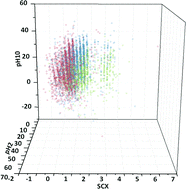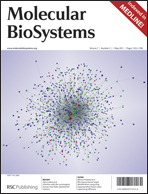Extensive front-end separation is usually required for complex samples in bottom-up proteomics to alleviate the problem of peptide undersampling. Isobaric Tags for Relative and Absolute Quantification (iTRAQ)-based experiments have particularly higher demands, in terms of the number of duty cycles and the sensitivity, to confidently quantify protein abundance. Strong cation exchange (SCX)/reverse phase (RP) liquid chromatography (LC) is currently used routinely to separate iTRAQ-labeled peptides because of its ability to simultaneously clean up the iTRAQ reagents and byproducts and provide first-dimension separation; nevertheless, the low resolution of SCX means that peptides can be redundantly sampled across fractions, leading to loss of usable duty cycles. In this study, we explored the combinatorial application of offline SCX fractionation with online RP–RP applied to iTRAQ-labeled chloroplast proteins to evaluate the effect of three-dimensional LC separation on the overall performance of the quantitative proteomics experiment. We found that the higher resolution of RP–RP can be harnessed to complement SCX–RP and increase the quality of protein identification and quantification, without significantly impacting instrument time and reproducibility.

You have access to this article
 Please wait while we load your content...
Something went wrong. Try again?
Please wait while we load your content...
Something went wrong. Try again?


 Please wait while we load your content...
Please wait while we load your content...